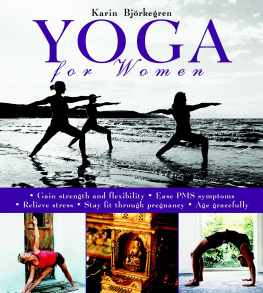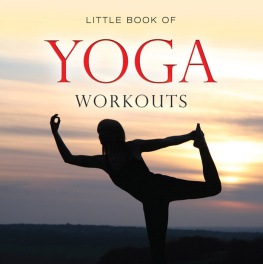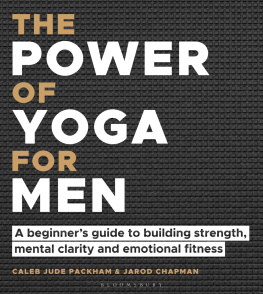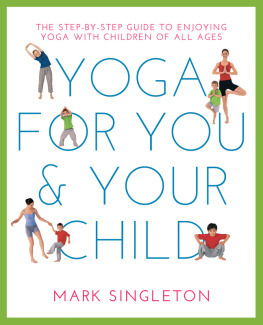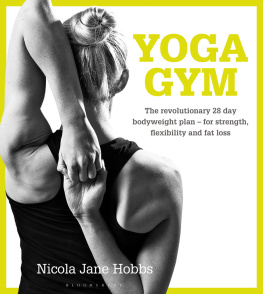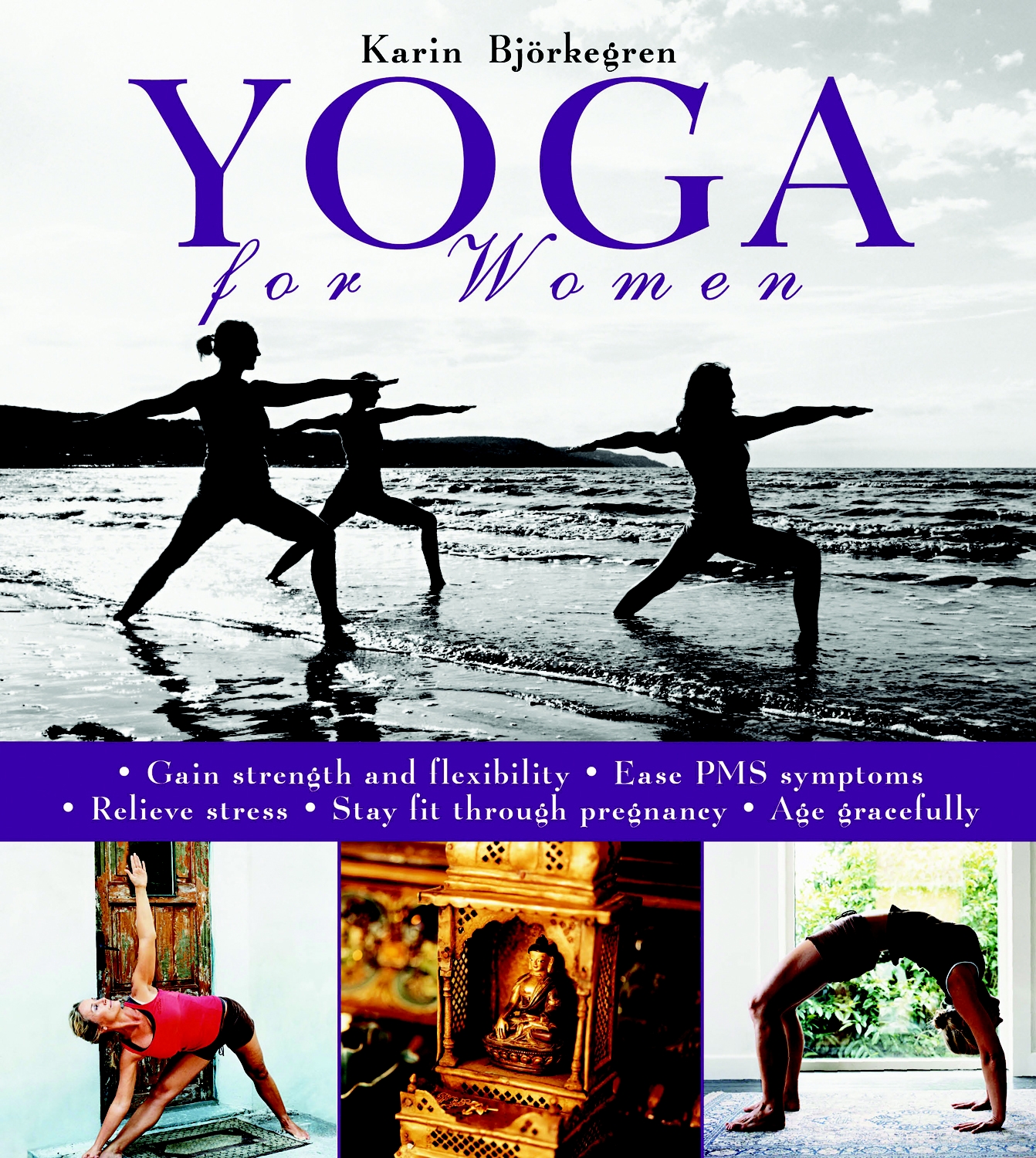Bibliography
Dancing the Body of Light, by Dona Hollema, Pegasus enterprises
The Illustrated Encyclopedia of Healing Remedies, by C. Norman Shealy, Knemann Publishing
Ashtanga Yoga Tradition of Sri K. Pattabhi Jois, by Petri risanen, Prisma Publishing
Yoga: The Path to Holistic Health, by B.K.S Iyengar
Yoga for Pregnancy, Birth and Beyond, by Franoise Barbira Freedman, B. Wahlstrm
Awakening the Spine, by Vanda Scaravelli, Harper Collins
The New Yoga for People Over 50, by Suza Francina, Health Communications, Inc
Yogini The Power of Women in Yoga, by Janice Gates, Mandala
Moola bandha The Master Key, by Swami Buddhananda, Yoga Publications Trust
Hatha Yoga: The Hidden Language, by Swami Sivananda Radha, Jaico Book
Yoga and The Wisdom of Menopause, by Suza Francina, Hci Books
The New Yoga for People Over 50, by Suza Francina, Hci Books
Om Yoga, by Lisa Ljungh Strmberg, DN Publishing House
Yoga, Tantra and Meditation in Daily Life, by Swami janakananda, Bindu
Ashtanga Yoga: The Complete Mind and Body Workout, by juliet Pegrum, B. Wahlstrm
The Path of Yoga, by Osho, Energica Publishing House
The Seven Spiritual Laws of Yoga: A Practical Guide to Healing Body, Mind, and Spirit, by Deepak Chopra, Forum
Happy Yoga: 7 Reasons Why Theres Nothing to Worry About, by Steve Ross, Energica Publishing House
Yoga Mind, Body & Spirit, by Donna Farhi, Owl Books
Centered Yoga, by Dona Holleman
Yoga Mala, by Sri K. Pattabhi Jois
Ashtanga Yoga, by Lino Miele
Chapter 1:
What is Yoga?
No one knows exactly how old yoga is. The oldest archeological evidence of yogas existence are some stone carvings portraying figures in different yoga poses that were found in the Indus Valley, on the border between Pakistan and India. The findings are estimated to come from around 3000 B. C.E. Yoga was first mentioned in the Vedas, a collection of writings from around 2500 B.C.E.
CLASSICAL YOGA IS BASED ON THE
EIGHT LIMBS THAT Patanjali wrote down in aphoristic form in his Yoga Sutras, 200 CE. His writings are based on the Vedas, whose knowledge had been transmitted orally from guru to student, until they were written down. The Yoga Sutras consist of 195 aphorisms, 196 in some editions. In these, Patanjali systemized yoga and gave it a philosophical form. The Yoga Sutras are divided into four books, or chapters, called pada. They are: Samadhi Pada, which describes what yoga is; Sadhana Pada, which gives instructions on how to practice yoga; Vibhuti Pada, which mentions obstacles that might occur in the pursuit of yoga; and Kaivalya Pada, which describes liberation from obstacles that create imbalances in life. In Sadhana Pada, Patanjali describes the eight limbs: Yama, Niyama, Asana, Pranayama, Pratyahara, Dharana, Dhyana, and Samadhi.
Yama Self-restraints
The first limb, Yama, is about self-control and describes five moral codes that describe how to live a worthy life and how to interact with our surroundings. Ahimsa do not hurt anyone, including yourself; Satya commit to truthfulness; Asteve do not steal; Brahmacharya live humbly and act in moderation; Aparigraha do not be greedy. Do not expect to receive anything back when you give, that will keep your mind pure.
Niyama Inner Observances
Gives guidelines on how to treat yourself with respect and how to create good habits. Shaucha purity, both on the inside and on the outside. Santosha contentment for what we have and dont have. Tapas doing just enough, whether sleeping, eating, exercising, working or relaxing, and the body and mind will be purified. Svadhyaya selfanalysis ; Ishvara pranidhana be humble before a higher intelligence or God to let go of ego.
Ashtanga Yoga The Eight Limbs
of Yoga
Ashta: eight Anga: limb Yoga: yoke/union
Asanas Movements
The only one of the eight limbs that has anything to do with yoga movements. In ashtanga vinyasa yoga they strengthen, cleanse, and soften the body and mind. The breath links the movements. Practicing the ashtanga vinyasa yoga series will prepare you to face the challenges in life.
Pranayama Breathing Exercise
Pranayama is a method to regulate and optimize the energy flow in the body.
Pratyahara Withdrawal of the Senses
The first step towards shifting the focus to your internal world. Here you practice your ability to control and withdraw your senses from external objects. The goal is to shift the focus from the external world and turn inwards to get to know your inner self.
Dharana Concentration
Here you practice concentration and the ability to control and focus the mind. Dharana is the first step towards achieving deep meditation.
Dhyana Meditation
A meditative state, where you leave your ego and achieve a deep connection to the present moment and your inner self. Only then can you truly connect to your surroundings.
Samadhi
The final goal of yoga. A state of utter stillness transcending the body and mind, where the life force flows freely and you achieve a connection with the Divine and the rest of the world.
Yoga as a Tool
Yoga is not a religion, but more like a science of life. It is the oldest system in the world for personal development, where it is important to put equal focus on the body, mind, and soul. Yoga means yoke/union: uniting the individual self (jiva) with the divine consciousness (Brahman).
Simply put, we will find the answers we are looking for within ourselves we are all like uncut diamonds we are all God and yoga is a tool to find ourselves again, since most of us seem to get lost after our birth. We are essentially born pure, but our experiences, paths, and actions do not always stem from our inner divine, and we need to reconnect to that truthful inner being inside of us.
It is easy to get the impression that you must follow a strict diet, learn all about yoga philosophy, and change your life drastically if you want to begin practicing yoga. But yoga can fit into any lifestyle, we can embrace it no matter where we are or what lives we are living. I believe that the biggest challenge is to fit yoga in to your daily life where work, children, partners, family, and friends already fill our busy schedules.
You can read plenty of books on yoga, you can learn Sanskrit, or interpret Patanjalis Yoga Sutras you might even learn his writings verbatim and repeat them in Sanskrit, but if it doesnt manifest itself in you, what is the effect? Preferably, you should practice meditation and yoga every day, so that it is nurtured inside of you. It wont happen just by reading about it, but you need to let it grow and manifest itself by the act of doing it. Be patient, it wont happen right away, but if you are persistent and pay attention, yoga will teach you to understand your bodys signals. All you need to do is listen instead of taking it for granted.
Yoga is a philosophical system that includes ethical rules and attitudes such as being kind to yourself and to other living beings, and other practical tips and methods that makes life easier and more harmonious and healthy. When the mind and body are in harmony with each other, a desire to maintain a healthy lifestyle follows naturally. Slowly but surely yoga increases each individuals potential. For many of us, our first encounter with yoga will be like falling in love because well feel the positive effects of our practice almost right away. Maybe youll start to sleep better and deeper, or feel less affected by stress. All of a sudden you will notice the positive changes that yoga brings into your life.

